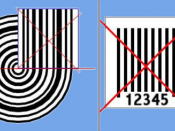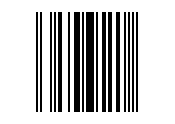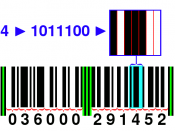BARCODES: WHAT THEY ARE AND HOW THEY ARE IMPLEMENTED Barcoding is the process of identifying and tracking each product using a unique barcode label. The first barcode, a circular design, was patented in 1949. The grocery industry was the leader in wide spread use of this process in the early 1900's. Today, companies in virtually every industry have adopted over 50 different barcode symbologies. Each of the barcode symbologies offers one or more of the following characteristics: robust character set, structural simplicity, generous tolerances for printing and reading, and high data-to-size ratio.
Definition of a barcode A barcode is a graphical symbol composed of parallel bars and spaces with varying widths to represent a combination of letters and numbers. UPC, I 2 of 5, and Codebar are examples of numerical codes and Code 39 and Code 128 are examples of alphanumeric codes. The following discusses each of these different types of barcodes in greater detail.
Universal Product Code (UPC) Universal Product Code (UPC) consists of two strings of alphanumeric characters separated by a couple of long bars in the middle. The first string represents the manufacturer of the product and the second string represents the actual product. This barcode is said to be a fixed length code because the code always contains the same number of characters. EAN (European Article Numbering) and JAN (Japanese Article Numbering) are variations of the basic UPC design.
Interleaved 2 of 5 (I 2 of 5) Interleaved 2 of 5 (I 2 of 5) code is an industrial barcode used to encode numeric data only. It is a continuous code comprised of wide bars and spaces. Continuous code means that both the bars and spaces are coded. Each digit is made up of two wide elements and three narrow elements. The odd digits...


